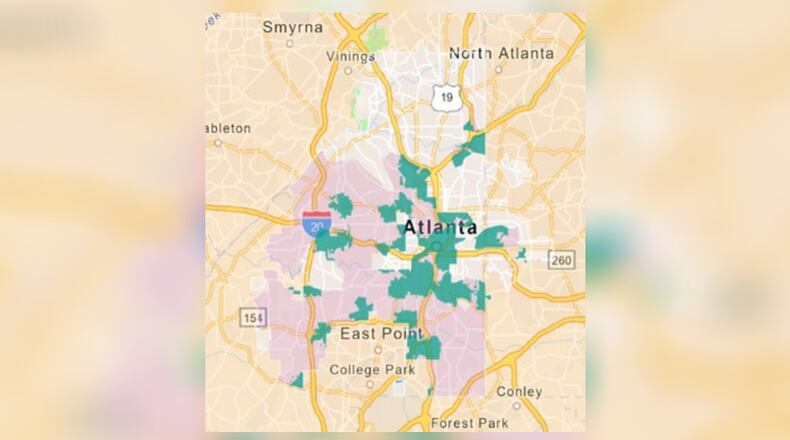The number of Atlanta residents living within half a mile of fresh food increased greatly over the last six years, but geographic and racial disparities continue to impact residents’ food access, a new city report found.
The Fresh Food Access Report, released recently by the city, found that 75% of Atlanta residents lived within a half mile of fresh food in 2020; in 2015, that figure sat at just 52%.
New grocery stores, neighborhood markets and farmer’s markets provided fresh food locally to an additional 100,000 Atlantans, the report stated. The city defined a “fresh food access site” as a location that sells fresh fruit and vegetables and may provide meat and eggs.
Being able to access and afford nutritious food became especially crucial during the coronavirus pandemic, when more families across metro Atlanta had a harder time putting food on the table, studies showed.
“For Atlanta to be a place where all residents can thrive, we must ensure that residents have access to fresh food,” Mayor Keisha Lance Bottoms said in a statement. Her administration set a goal of ensuring at least 85% of Atlanta residents live within a half-mile of fresh food by 2022.
While the report heralded the improvement in fresh food access, it noted that those gains occurred unevenly throughout the city. Areas around Midtown saw the biggest increase in access, compared to less densely populated neighborhoods on the Southside and Westside.
The changes were also uneven demographically, with challenges to fresh food access being concentrated in neighborhoods that are predominantly Black, the report found.
Neighborhood markets played a key role in expanding fresh food access in low-income areas since 2015. The report recommended the city allow the on-site sale of food at urban farms and expand the MARTA Markets program, which provides fresh food at some MARTA stations.
“When residents can easily access fresh food, it creates a more healthy, resilient city,” said J. Olu Baiyewu, the city’s urban agriculture director. “The Fresh Food Access Report helps us understand where to target resources as we continue advancing our goal of ensuring a greater and more equitable distribution of fresh food access in the city.”
About the Author
The Latest
Featured




